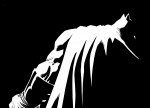 The entire DKIII team of Frank Miller, Brian Azzarello, Andy Kubert, and Klaus Janson will be signing the book December 19th at Midtown Comics Downtown from 4:00pm-6:00pm on Saturday, December 19th. But of course you’ll need to enter a contest to get in line and then dress appropriate for the season: Midtown Comics is […]
The entire DKIII team of Frank Miller, Brian Azzarello, Andy Kubert, and Klaus Janson will be signing the book December 19th at Midtown Comics Downtown from 4:00pm-6:00pm on Saturday, December 19th. But of course you’ll need to enter a contest to get in line and then dress appropriate for the season: Midtown Comics is […]
Viewing: Blog Posts Tagged with: andy kubert, Most Recent at Top [Help]
Results 1 - 4 of 4
Blog: PW -The Beat (Login to Add to MyJacketFlap)
JacketFlap tags: Events, Frank Miller, Brian Azzarello, Top News, andy kubert, midtown comics, DKIII, Klaus Janson, Add a tag
Blog: PW -The Beat (Login to Add to MyJacketFlap)
JacketFlap tags: DC, NYCC, Frank Miller, Brian Azzarello, Top News, andy kubert, NYCC '15, The Dark Knight III: Master Race, The Dark Knight Returns, Add a tag
For those who missed it on twitter, our intrepid leader Heidi MacDonald was on the ground at the anniversary panel for The Dark Knight, where The Dark Knight III: The Master Race was on everyone’s mind. The panel had a few surprises in store, including an appearance by Frank Miller himself. Here’s the rundown: […]
Blog: PW -The Beat (Login to Add to MyJacketFlap)
JacketFlap tags: Jeff Lemire, DC Comics, Green Arrow, Gail Simone, Top News, Guillem March, Greg Pak, Andrea Sorrentino, andy kubert, Darkseid, Derek Fridolfs, Superman, Poison Ivy, The Joker, Villains Month, News, Reviews, DC, Add a tag
DC sent along a lovely pack of review copies for Villains Week, and I feel like it’s only fair that I read through all of the ones out this week and review ‘em. I’ll go from my least favourite to my favourite, ending with my favourite of this first lot. And hey! If DC send along a second selection next week, I’ll review those ones too!
Slight spoilers below, but nothing particular.
One thing that you should note is that some of the comics take place as part of Forever Evil – the Batman and Flash comics, it seems – whilst the Green Lantern/Superman issues are more general. So if you pick up Poison Ivy or Grodd, it’ll make reference to two of the more immediate moments which occur in Forever Evil #1. Keep that in mind as you buy the comics – they’ll all make sense, but some will be directly following on from the main story whilst others are unconnected origin stories.
Desaad
Paul Levitz (w), Yildiray Cinar (a), Jason Wright (c), Carlos M. Mangual (l), Anthony Marques, Mike Cotton (e)
I’m astonished this issue was made. Impossible to understand as a standalone story, it features a sequence about a mass shooting which is in extremely poor taste. The rest of the comic doesn’t explain who Desaad is or what’s going on, and is filled with concepts and ideas which are neither fleshed out nor coherent. The art tells the story – what little there is – well enough, but there are some dodgy character designs going on. I didn’t care at all about Desaad by the end of the issue.
Relic
Robert Venditti (w), Rags Morales (a/i), Cam Smith (i), Andrew Dahlhouse (c), Dave Sharpe (l), Chris Conroy (e)
There’s an interesting story in here somewhere, but the artistic choice made here turns an origin story into a complete chore to read. Every page is a splash page from Rags Morales, and he chooses some absolute clunkers. The first page shows a pretty galaxy with an arm floating into the left frame. What’s going on? Who knows. It’s boring.
Morales doesn’t make any of the concepts in Venditti’s script work, and his character designs are uninspired and uniform. Andrew Dahlhouse does his absolute best to clean up this mess, but it’s a lost cause. I can see that Venditti’s story would be interesting, if only the comic had been told sequentially instead of as a series of misconnected splash pages.
Joker
Andy Kubert (w), Andy Clarke (a), Blond (c), Jared K. Fletcher (l), Katie Kubert (e)
As you might expect, there’s really no reason to try and offer any backstory to The Joker. This issue tells a nonsense side-story from some point in Joker’s past, during which he has some flashbacks to his childhood. Really, any attempt to flesh out the past of the character is always going to flop – the more we know about Joker, the less interesting he is. As a result, the issue flails with an un-involving main story which bombs the final gag, and flashbacks which take away from the story entirely.
Andy Clarke’s artwork is lovely, as always, although the weak script means it’s very difficult to determine how some scenes are meant to be interpreted. There looks to be some intent at offering a subtext, but this is only conveyed in the art and not the script. It seems as though one of the supporting characters is secretly working at a cross-purposes, but there’s only so much the art can do without clear dialogue. Clarke attempts to elevate a completely throwaway storyline, but can only offer a very pretty, very weak, story.
Grodd
Brian Buccellato (w), Chris Batista (a), Tom Nguyen (i), Wes Dzioba (c), Wes Abbott (l), Kyle Andrukiewicz, Joey Cavalieri (e)
Grodd’s a curious character. The main reason he exists as a villain is because gorillas are scary, I guess? This is an issue which struggles because the character comes into this issue with a goal that doesn’t make any sense. Every single character in the comic calls him out for his strange decisions and ambition, and he basically hits them until they give up trying. Does it forgive a strange character if every other character CALLS him strange? I’m not sure on that.
Chris Batista, to me, is one of those artists DC have never appreciated quite enough, and his work here is really good fun – not everybody can draw an expressive gorilla. Not a bad issue by any means, but one which doesn’t manage to quite fix the character.
Cyborg Superman
Michael Alan Nelson (w), Mike Hawthorne (a), Daniel Brown (c), Carlos M. Mangual (l), Rickey Purdin (e)
Interesting, this one. It’s going to upset fans of the character, but tells a reasonably involving story. Framing two sequences against one another, the final few twists are very obvious, although Nelson mines from really fun laughs from Cyborg Superman’s sadistic quest for a sidekick. I don’t know how this actually fits in with established continuity – it would seem to wreck Green Lantern’s past storylines, for example – but we’ll have to see. It’s a perfectly fine comic, and Hawthorne’s art is like somebody put Jamie McKelvie and Stuart Immonen’s art in a blender. Good, in other words.
Two Face
Peter J. Tomasi (w), Guillem March (a), Tomeu Morey (c), Dezi Sienty (l), Darren Shan, Rachel Gluckstern (e)
Featuring an astonishingly drawn and coloured opening sequence between Two Face and Scarecrow whilst both are stood ON the Bat-Signal, the issue sadly then moves into familiar territory for the rest of the issue. Morey’s colouring is spectacular though, especially in the early stages of the issue. At first it feels like there’s a definite plan for the issue, until the story turns into a typical Two Face/anti-hero narrative. There’s nothing especially new here, especially for those who have read No Man’s Land and other stories where Two Face similarly has no Batman opposing him.
It’s entertaining, but it also feels like Tomasi is killing time for the last half of the page-count. There’s some good puns about duality, though, which is half the battle in a Two Face story.
Bizarro Superman
Sholly Fisch (w), Jeff Johnson (a), Andy Smith (i), Javier Mena, Jordie Bellaire (c), John J. Hill (l), Ricky Purdin (e)
This is actually a Lex Luthor story, and it follows familiar ground in an entertaining way. No other character in comics quite has that mix of ambition, arrogance and disregard that Luthor has, and Fisch nails the character. Bizarro Superman himself is a strange creature in the comic – his arc is obvious from the moment he appears. Interestingly enough, Bizarro at no point takes on the design he has in the cover – this is a step far removed from the ‘classic’ rendition of the character.
But despite the by-numbers nature of the narrative, the creative team fit enough touches of silliness and character into the story that the comic works very nicely indeed. I was surprised to find I enjoyed the comic so much, but it was a really solid issue.
Ventriloquist
Gail Simone (w), Derlis Santacruz (a), Karl Kesel (i), Brett Smith (c), Dave Sharpe (l), Katie Kubert (e)
Very much in-tone with her run on Suicide Squad, Gail Simone’s story here puts focus on different mindsets of villainy. One thing the writer has excelled at recently has been creating villains who do evil acts no other villain would do – her Deadshot felt like a unique person rather than a sarcastic goon with a gun, and she’s created some of the most genuinely unsettling villains of the last few years. So it is again with Ventriloquist, which focuses on the second iteration of the villain, Shauna Belzer.
Carefully told, even if it does require a rather large suspension of disbelief towards the end, the story gives us a version of the characters – both ventriloquist and dummy – which keeps readers surprised and unprepared for what might happen next. And when Simone does leave a blatant piece of foreshadowing in the story, she does it to drum up tension and let readers stay one step ahead of the characters. It’s a well-done story, which takes an (probably rightfully) underused villain and give them a bit of purpose and character. It might be deeply silly, but there’s a deadly slice of horror tucked away in there too.
Count Vertigo
Jeff Lemire (w), Andrea Sorrentino (a), Marcelo Maiolo (c), Rob Leigh (l), Harvey Richards, Will Moss (e)
A considered and underplayed issue, Green Arrow’s team make the most of this opportunity to build up one of the character’s most famous villains. Despite a slightly silly design, the character gets a much-needed redevelopment and sense of purpose which feels genuinely menacing. This doesn’t feel like a villain who is insane, but rather a methodical and calculated man who realises that breaking a moral code is preferable to getting left behind.
Sorrentino and Maiolo do some more wonderful work on the issue, continuing their incredible run of form. Sorrentino is the most distinctive and impressive artist at DC, and creates a wonderful sense of space in his work. On one page, for example, he breaks the story into ten page-width boxes, but without any of them feeling cramped on unintelligible. He does masterful work with POV framing, as well – he has an innate sense of perspective which makes it feel as though we’re looking directly out the eyes of the character, without things seeming like they’re overly-crafted and false.
It’s a very very strong issue indeed. Lemire unfolds an inevitable story as his own leisure, and leaves us with the indelible impression that Count Vertigo just became one of DC’s finest.
Poison Ivy
Derek Fridolfs (w), Javier Pina (a), John Calisz (c), Taylor Esposito (l), Kyle Andrukiewicz, Joey Cavalieri (e)
Like with the Two Face issue, this is an exploration in what Poison Ivy does when Batman isn’t around. And again, it’s basically what happened in No Man’s Land. The creative team manage to spread that idea out, however, and fill in some great details about the character and her origin. Also, there’s something quite enjoyable about seeing the character cut loose and have fun, because unlike most other Batman villains, her goal is philanthropically sociopathic. Fridolfs details how her ambitions are almost-so-close to being understandable, and Kalisz’ colours actually go a long way towards aiding that.
In the flashback sequences his colours highlight the character as a total innocent, in bright, warm pastels which makes the reader feel empathetic to her. Pina’s artwork is also excellent, presenting the character over the years as she ages – young and adult Ivy look like each other. I have a soft spot for the character, but the issue doesn’t rest on that hope. Instead, it offers a coherent origin story which binds the character’s personality together and leaves her in a stronger position than before.
Darkseid
Greg Pak (w), Paulo Siquiera, Netho Diaz (a), Hi-Fi (c), Dezi Sienty (l), Anthony Marques, Eddie Berganza (e)
The best issue so far, and likely to be the best of the initiative in general. Greg Pak offers us a talking Darkseid who earns his position as villain #1 in the DC universe. He’s scary and performs crazy, ambitious feats. What’s most notable is how Pak seeds his own just-started stories into the first Justice League story Geoff Johns wrote in the New 52 – it feels seamless and goes a very long way in fixing the problems many readers had with that first story.
A brilliant showcase for Darkseid as a villain, the issue is big and grandiose, explains who he is and why he does what he does, and makes the reader eager to read more Darkseid stories in future.
As I mentioned it in the Joker review, I should also mention it here – it’s a bit strange reading a Darkseid origin story. At the same time, so far in the New 52 Darkseid has been a bit rubbish… so I’m really just happy that the issue deals with him, gets it out the way and pushes the whole thing forwards.
Siquera, Diaz and Hi-Fi offer distinctive, eye-popping visual images whilst letterer Dezi Sienty handles the Kirby-esque dialogue with consummate ease. The ideas presented here could look silly and ridiculous, but for the intervention of Siquira and Diaz as artists. They handle everything thrown at them and turn it from nonsense into a believable (if strained) reality. If there’s one villain issue to pick up – it’s this one, for my money.
And here’s some numbers:
* five of the books are origin stories set primarily in the past
* six are set in the ‘present’ day, after Forever Evil #1
* three of them do not feature the ‘origin’ of the character profiled
* two books have a completely different character in the starring role, rather than the original pre-52 character
* four of the characters have a backstory of familial abuse/murder
* Batman, Superman, Darkseid, Count Vertigo, The Cyborg (Superman) and Desaad all get ‘created by’ credits.
Blog: PW -The Beat (Login to Add to MyJacketFlap)
JacketFlap tags: Top News, andy kubert, Brad Walker, Rags Morales, Reviews, Comics, DC, Superman, Grant Morrison, Action Comics, Add a tag
Grant Morrison’s run on Action Comics has been met with both high praise and no small measure of bewilderment. But this is a legendary run – you just need to think five dimensionally.
When Morrison was announced as the writer of Action Comics #1, back in 2011, there was a great deal of excitement within the comics community. The man who had given us one of the greatest Superman books of all time, All-Star Superman, seemed a poetic choice as the architect of this brand new history. Morrison spoke of his love for the original Golden Age character, his socialist roots and desire to do good in the world; Superman as a folk tale, before he became the centrepiece of our modern mythology. The young Kal, standing proud and over-confident in his American jeans and self-branded t-shirt, cape flying behind him as he raced from one adventure to the next.
Action Comics, set five years behind the current day Superman comic, was to show us how Kal went from farmboy to international hero – from brash young man to a wiser one – but also to introduce all the pieces of the puzzle that make him who he is. There was fan outcry at the pre-publication revelations that Clark and Lois would no longer be a couple, and that Clark’s parents would no longer be alive. Comic fans, strangely adverse to change in a constantly recycling continuity, were outraged at the lack of a romantic plot with Lois, perhaps inadvertently recasting her in their minds as in existence only to please the leading man. The lack of parents of course linked this Superman much more strongly to his Golden Age roots, and removed him too from any existing connections to the world he found himself living on. An alien alone.
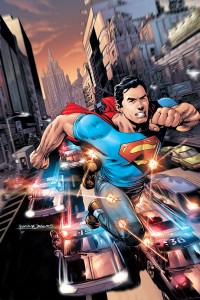 As Morrison’s run kicked off, with newspapers still fascinated by the jean-clad Superman and somehow missing the alarm bells that usually come with any mention of “socialism”, it soon became clear that Morrison’s ambitions were far greater than previously stated. This was not to be merely the introduction of the character, but the making of him – joining up pieces of a fragmented puzzle to show the whole, a Superman for a new generation of readers that brought the best of every previous incarnation along for the ride. Perhaps not surprising given the writers similar treatment of Batman, but the sheer scale of this particular endeavour given the extremely tight timescale is rather phenomenal.
As Morrison’s run kicked off, with newspapers still fascinated by the jean-clad Superman and somehow missing the alarm bells that usually come with any mention of “socialism”, it soon became clear that Morrison’s ambitions were far greater than previously stated. This was not to be merely the introduction of the character, but the making of him – joining up pieces of a fragmented puzzle to show the whole, a Superman for a new generation of readers that brought the best of every previous incarnation along for the ride. Perhaps not surprising given the writers similar treatment of Batman, but the sheer scale of this particular endeavour given the extremely tight timescale is rather phenomenal.
Unsurprisingly, many readers were somewhat lost at various points – because when I say fragmented, I am being quite literal. After only four issues it was necessary for artist Rags Morales to need a break to catch up, and another plot was inserted with both the baby Kal’s escape from Krypton, and a future Superman returning to a point in time not long after the previous issue. The change in art style thanks to Andy Kubert for this two issue interlude helped underscore the time difference, and in issue seven we were back on our original track. These interludes became a signature of Morrison’s run, with further adventures spending time on the Superman of Earth 23 – and a meta teaser for Morrison’s upcoming Multiversity – as well as a Halloween trip to the Phantom Zone, and of course the obligatory issue zero with its genuinely heartwarming tale.
But here’s the thing: Morrison planned a short six issue run on the comic. When the first artist change came up, he told me that:
“…for me it hits the long term collections of it to have things done like that but at the same time it brings back a lot of the freshness and improvisation of doing comics again and just responding to that and also sometimes you know they’ll be like we need a two part filler here – okay I’ll just come up with something, and it might not necessarily fit it in to the middle of this but okay, you need a filler.”
And yet, every little aspect of this comic – from the future plot to the Phantom Zone to the appearance of the little teetotal man in the first panel of issue one – suggests a much grander plan. If I was uncharitable I’d chalk this up to a mild case of fibbing, but I know that’s not the case. Of course it’s likely that someone with so much knowledge of the DC universe would subconsciously drop little things in to the narrative that might turn out to be useful later – but for a six issue run? It’s a marvellous little contradiction that is completely in keeping with the unfolding story itself, perhaps demanding that it be told.
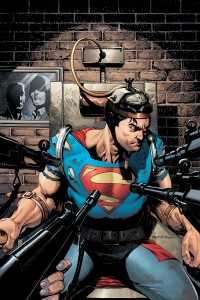 So we have the initial plot, the tale of Clark finding his feet as an investigative journalist and being a superhero in a world without superheroes – for he was the first – while the world reacts with suspicion, just in time for the Collectors to appear on the scene labelling Earth as a doomed planet. Clark is also receiving communications from a secretive person named Icarus, while Lex Luthor attempts to negotiate for his own life with the incoming alien threat. Superman of course saves the day, after pushing himself further than ever before, and the people of Earth are happy to have their own personal saviour. Kal even gets a shiny new suit out of it.
So we have the initial plot, the tale of Clark finding his feet as an investigative journalist and being a superhero in a world without superheroes – for he was the first – while the world reacts with suspicion, just in time for the Collectors to appear on the scene labelling Earth as a doomed planet. Clark is also receiving communications from a secretive person named Icarus, while Lex Luthor attempts to negotiate for his own life with the incoming alien threat. Superman of course saves the day, after pushing himself further than ever before, and the people of Earth are happy to have their own personal saviour. Kal even gets a shiny new suit out of it.
This alone woud be a solid little arc, establishing Kal as an accepted hero, uniting him with Brainiac and his Fortress of Solitude, placing Lex, Lois and Jimmy on our radar of people to look out for, and… well, also hinting at the involvement of the 5th dimension, casually mentioning a missed visit that is later revealed to be the Legion of Superheroes, foreshadowing the appearance (and constant invisible presence) of Krypto, a suggestion that the small man is the devil, and the introduction of Nimrod who we know will shoot Superman in the brain in the future because we’ve seen it in a past issue, as well as the K-Men who don’t actually quite exist yet because they’re from the future also, and the future form of Eric Drekken and the existence of the “First Superman”.
All in all, it’s a good job Morrison stayed on to write more as while those plot bunnies would have given any writer much to play with, it’s clear that by now there was a greater plan in mind. In the first 8 issues, the fragments were already starting to tug apart, and I was reminded of Morrison’s fondness for telling stories that can only be told in comic form. In comics, unlike say films or games, each story is already a four dimensional experience – the reader is in control of the pacing and movement through time, even able to reverse time or skip from one time to another. With comics, the one thing that sets them apart from all other media – for me – is the gap between the panels. What happens in the gutters is completely unique to each and every reader, from the simple movements of a character across time, to the shifts between place, person and stories. When a writer chooses to increase those gaps, not only between sequenced panels but between issues, between pages, and between stories being told simultaneously at different time points, the story becomes even more interactive. A co-creation between creators and readers alike.
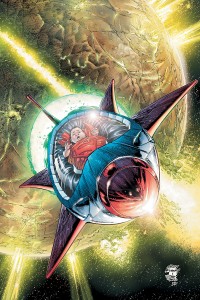 The fragments can be jarring, until you read further and more gaps are filled. This is partly due to the nature of the Big Bad, a 5th dimensional bastard named Vyndktvx, but it also serves to both explain the multitude of artists on the book, and to fill in those five years between issue one and where the character is supposed to end up. Five years over a handful of issues results in snapshots in time, little episodes that are important in the forming of Superman himself rather than an exhaustive chronological list. Superman was hated and feared – but not for long. Superman gave up his Clark Kent identity – but not for long. Superman is exasperated by the perceived inactivity of the other superheroes – but not for long. Superman plays can and mouse with Lex Luthor – but not for long. Superman interacts with Lois and Jimmy – but not for long. And so on. We know who Superman becomes, we have seen that story before in a million different varieties. But for this Superman, what is important? The chance to say goodbye to his father. The return of his faithful hound who never left his side. The children who found shelter in his cape. His landlady who gave everything to help him survive. That Kents never give up and that no matter what, he’ll never really be alone.
The fragments can be jarring, until you read further and more gaps are filled. This is partly due to the nature of the Big Bad, a 5th dimensional bastard named Vyndktvx, but it also serves to both explain the multitude of artists on the book, and to fill in those five years between issue one and where the character is supposed to end up. Five years over a handful of issues results in snapshots in time, little episodes that are important in the forming of Superman himself rather than an exhaustive chronological list. Superman was hated and feared – but not for long. Superman gave up his Clark Kent identity – but not for long. Superman is exasperated by the perceived inactivity of the other superheroes – but not for long. Superman plays can and mouse with Lex Luthor – but not for long. Superman interacts with Lois and Jimmy – but not for long. And so on. We know who Superman becomes, we have seen that story before in a million different varieties. But for this Superman, what is important? The chance to say goodbye to his father. The return of his faithful hound who never left his side. The children who found shelter in his cape. His landlady who gave everything to help him survive. That Kents never give up and that no matter what, he’ll never really be alone.
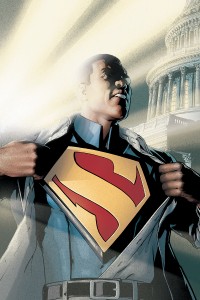 This is not the Superman of All-Star Superman. That Superman was older, matured, and a perfect focus of the Silver Age made real. This Superman is born from the pages of the Golden Age, each issue showing another edge of the same character while introducing the instruments of his incredibly complex life. He’s just a man who will never give up – the message at both the beginning of issue one as he threatens a corrupt businessman, to the end of issue eighteen where he hugs his dog and jokes about his hard won fight for both his life and the entire universe. An alien alone perhaps, but one who is very human. All-Star Superman was a god you could believe in; Action Comics Superman gets shit done.
This is not the Superman of All-Star Superman. That Superman was older, matured, and a perfect focus of the Silver Age made real. This Superman is born from the pages of the Golden Age, each issue showing another edge of the same character while introducing the instruments of his incredibly complex life. He’s just a man who will never give up – the message at both the beginning of issue one as he threatens a corrupt businessman, to the end of issue eighteen where he hugs his dog and jokes about his hard won fight for both his life and the entire universe. An alien alone perhaps, but one who is very human. All-Star Superman was a god you could believe in; Action Comics Superman gets shit done.
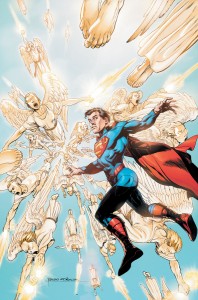 Having Superman face off against the devil, a jealous little man from another dimension who poses as dealer, bartender and lawyer, is a neat touch. Vyndktvx is not only attacking Kal at the end of the run but has been attacking him all his life, sometimes in ways that Kal will never know and perhaps never should. He is even the figure responsible for the Super-Doomsday, an “unstoppable killer franchise from a parallel reality” that is perhaps a shade too close to our own little Earth. Commentary on Superman as corporate symbol would appear to be in conflict with Morrison’s previous comments on Superman’s heritage, but not when you look between the lines. Vyndktvx’s pledge to “make coins of” Superman, and his subsequent failure is a clear illustration that Superman the mythic symbol of our age lives beyond corporate lines and greed. His past may be murky, but Superman’s ability to inspire is unstoppable. At least, in the hands of Morrison.
Having Superman face off against the devil, a jealous little man from another dimension who poses as dealer, bartender and lawyer, is a neat touch. Vyndktvx is not only attacking Kal at the end of the run but has been attacking him all his life, sometimes in ways that Kal will never know and perhaps never should. He is even the figure responsible for the Super-Doomsday, an “unstoppable killer franchise from a parallel reality” that is perhaps a shade too close to our own little Earth. Commentary on Superman as corporate symbol would appear to be in conflict with Morrison’s previous comments on Superman’s heritage, but not when you look between the lines. Vyndktvx’s pledge to “make coins of” Superman, and his subsequent failure is a clear illustration that Superman the mythic symbol of our age lives beyond corporate lines and greed. His past may be murky, but Superman’s ability to inspire is unstoppable. At least, in the hands of Morrison.
The revelation that the universe was born from Mxyzptlk’s hat, and subsequently that many worlds were destroyed by the multitude, the three dimensional interpretation of the multispear, is an interesting play on gods toying with their creations from above – and of course a parallel of the ability of creators to manipulate their own paper universes. That Kal is a favourite of his 5th dimensional audience for his ability to not be controlled – alongside his father – places him at the centre of the story for reasons beyond him simply being Superman. His angering of a petty god leads to his life being irrevocably damaged, neatly fitting in with the New 52 changes and perhaps hinting at a deeper message.
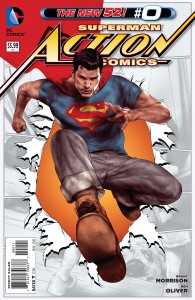 This is an ambitious run, all the more so for how everything does in fact tie together in the end. Even the smallest throwaway comments in the early issues are given meaning in later reveals, while the back up strips by Sholly Fisch (and the Action Comics Annual #1) are uncannily in tune with the main comic as well as giving deeper insights into Kal’s humanity. As time and story starts to slide sideways, with Vyndktvx breaking the fourth wall, the creators themselves appearing alongside the hand of god, and angels tumbling from the sky, the time slips start to collide with the whole picture becoming clear. With the arrival of the final issue I spent a few hours reading the entire run first, and the effect is rather like standing back from a tapestry to see all the threads intertwine.
This is an ambitious run, all the more so for how everything does in fact tie together in the end. Even the smallest throwaway comments in the early issues are given meaning in later reveals, while the back up strips by Sholly Fisch (and the Action Comics Annual #1) are uncannily in tune with the main comic as well as giving deeper insights into Kal’s humanity. As time and story starts to slide sideways, with Vyndktvx breaking the fourth wall, the creators themselves appearing alongside the hand of god, and angels tumbling from the sky, the time slips start to collide with the whole picture becoming clear. With the arrival of the final issue I spent a few hours reading the entire run first, and the effect is rather like standing back from a tapestry to see all the threads intertwine.
Honestly, I could spend thousands of words picking out all the links and meta-touches here, and still it would do no good – because what you, dear reader, insert in between those gaps and how you read the comic, through the manipulation of time and touch, and what you decide it all comes to… well that’s what makes the comic.
But I defy anyone not to have a little sniffle at the return of Krypto, and for the boys who borrowed Superman’s cape.
Ha-la Kal-El, ha-la-la!
Action Comics #1-18
Writer: Grant Morrison
Pencillers: Rags Morales, Brad Walker, Andy Kubert, Gene Ha, Travel Foreman, Cafu
Inkers: Andrew Hennessy, Mark Propst
Colourist: Brad Anderson, Art Lyon
Cover Artist: Rags Morales, Brad Anderson
Letters: Steve Wands, Patrick Brosseau
Editor: Matt Idelson, Will Moss
Publisher: DC
[Laura Sneddon is a comics journalist and academic, writing for the mainstream UK press with a particular focus on women and feminism in comics. Currently working on a PhD, do not offend her chair leg of truth. Her writing is indexed at comicbookgrrrl.com and procrastinated upon via @thalestral on Twitter]




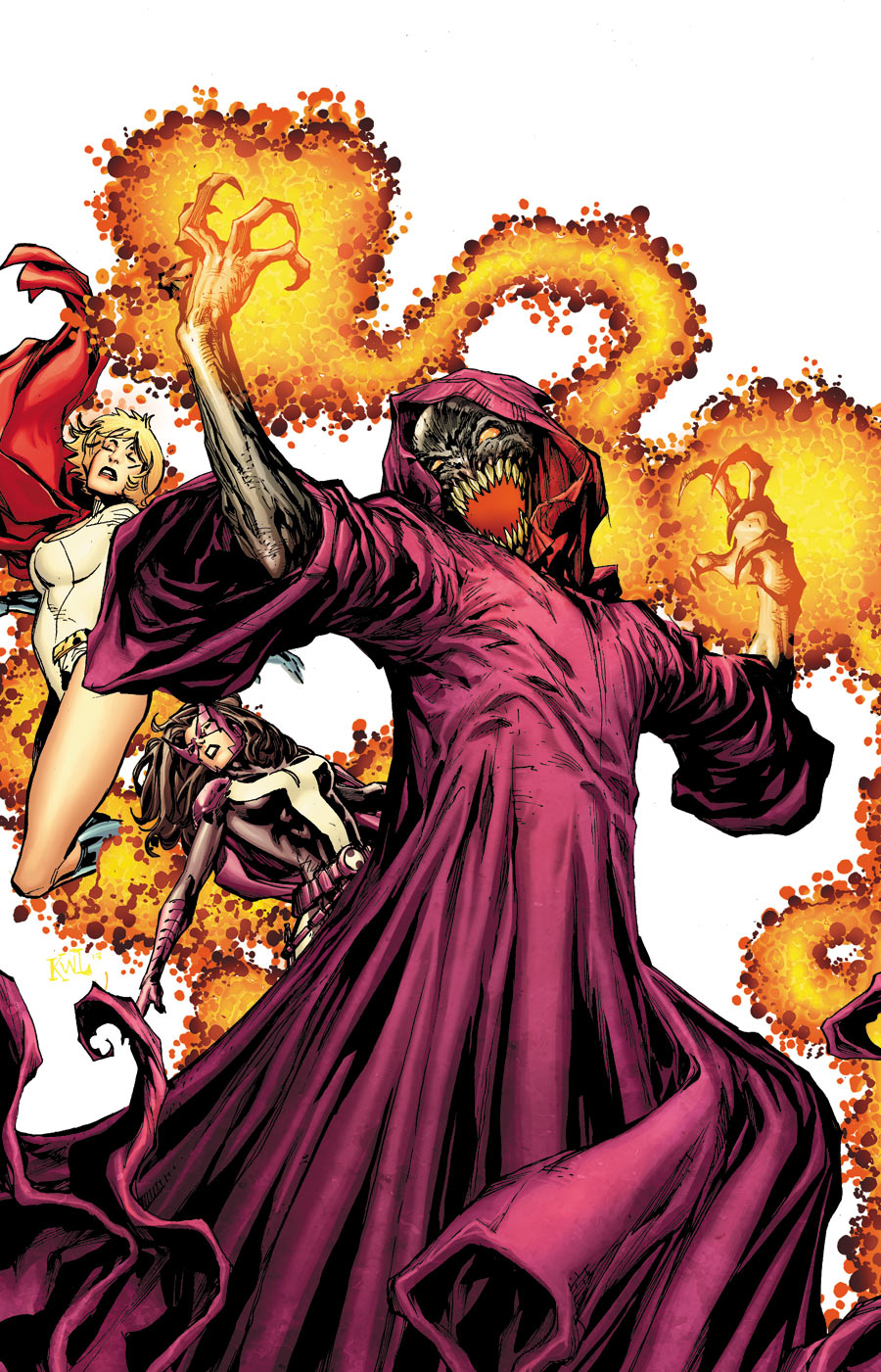
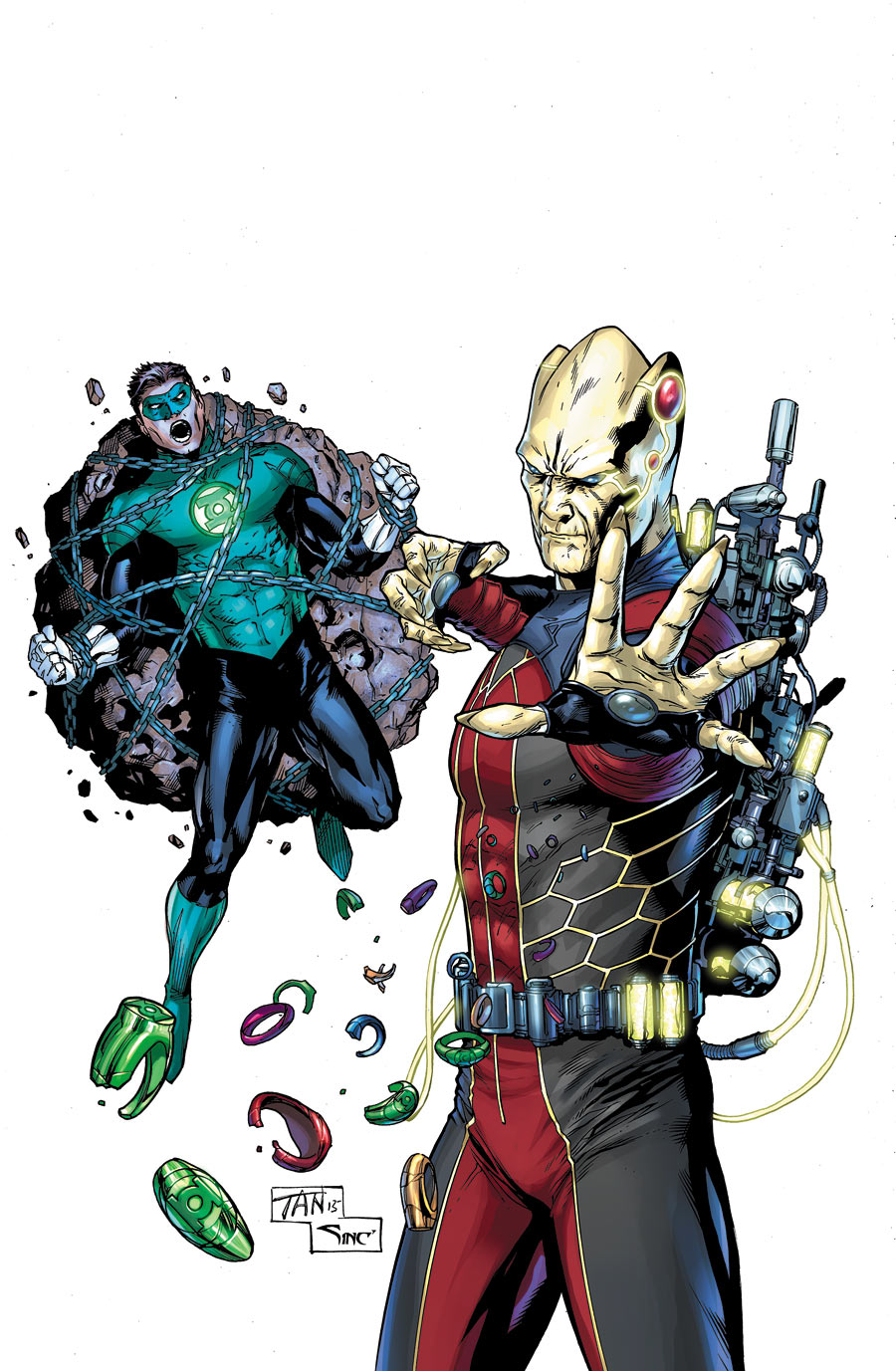
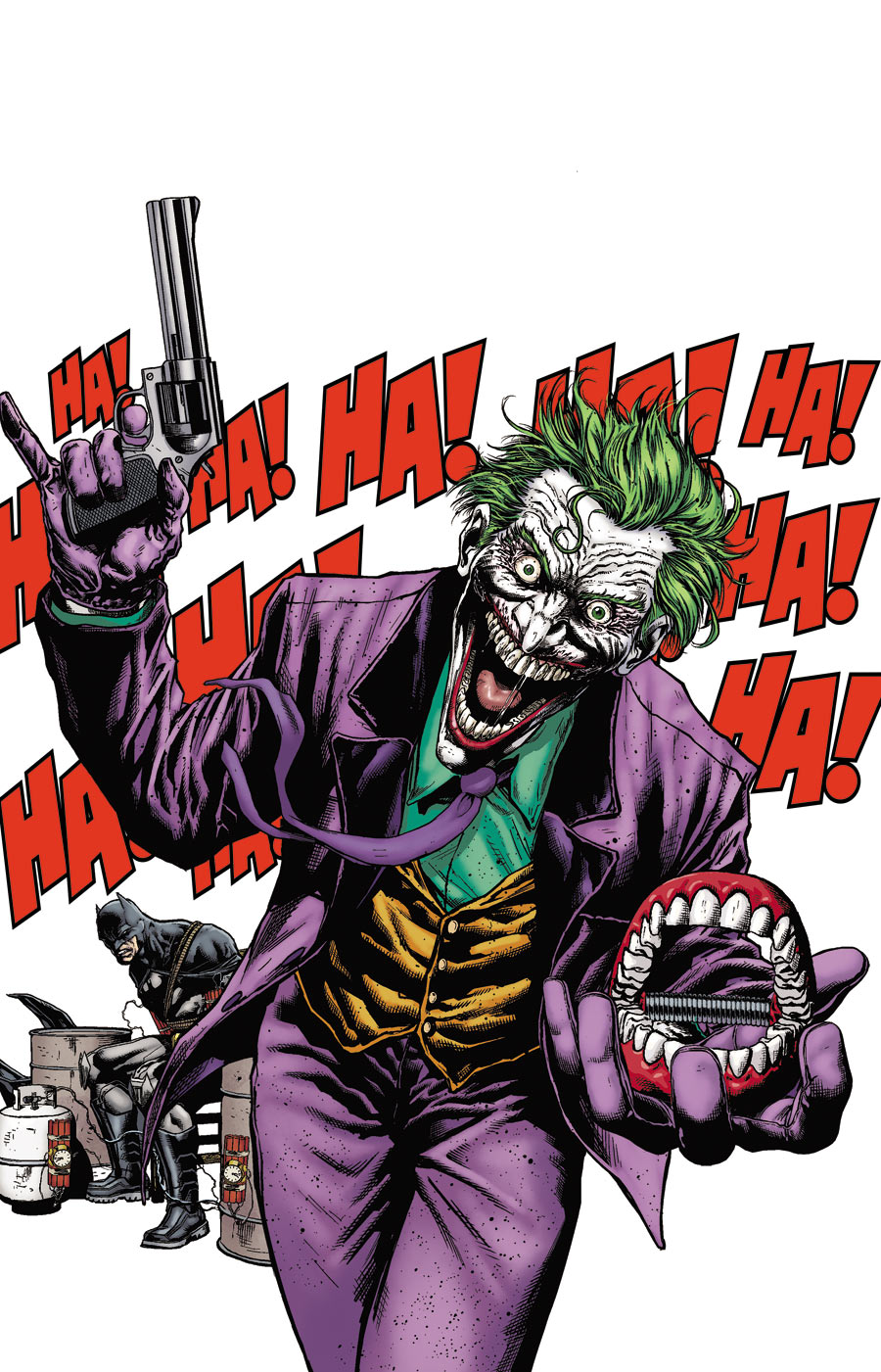
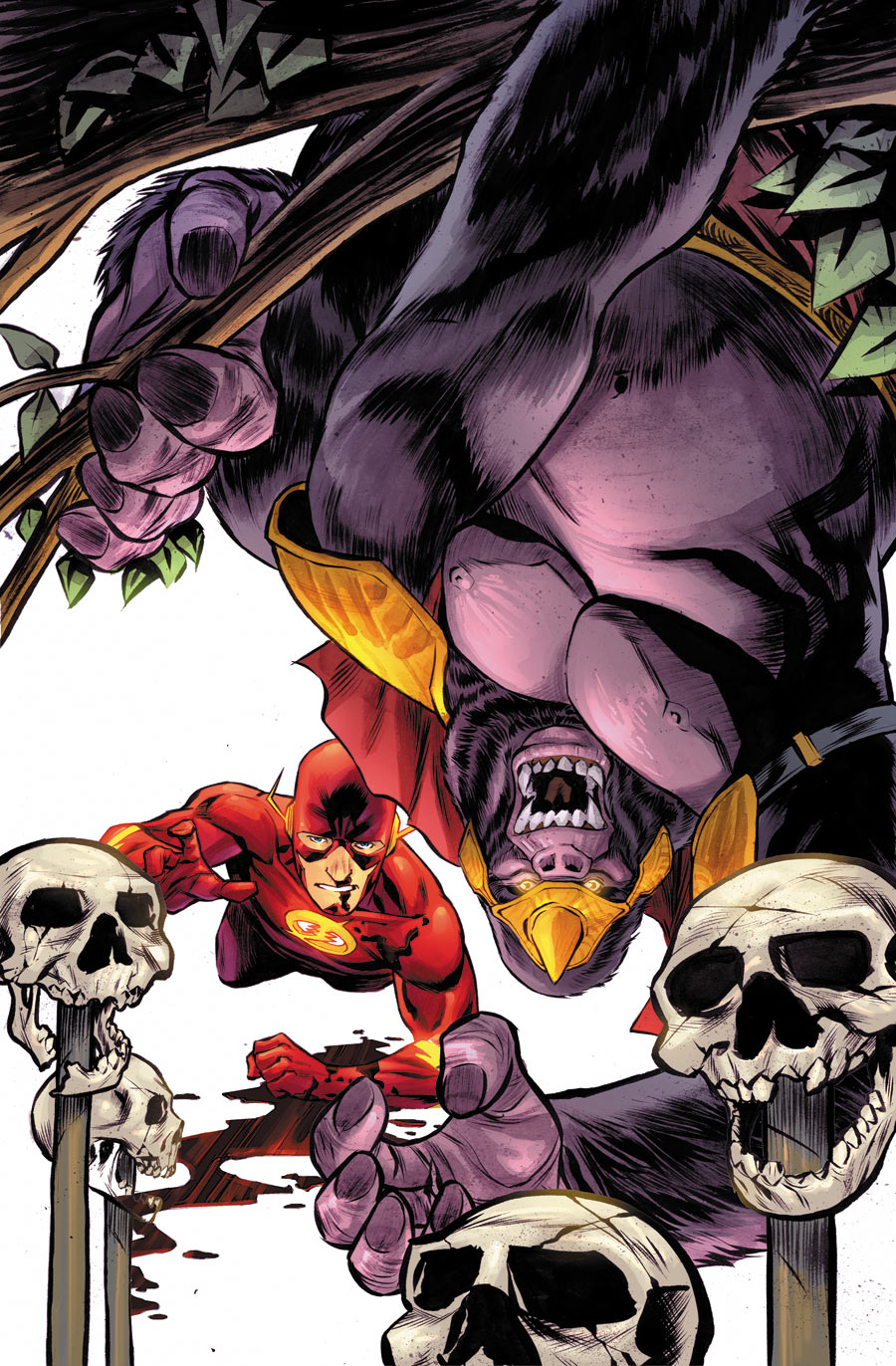
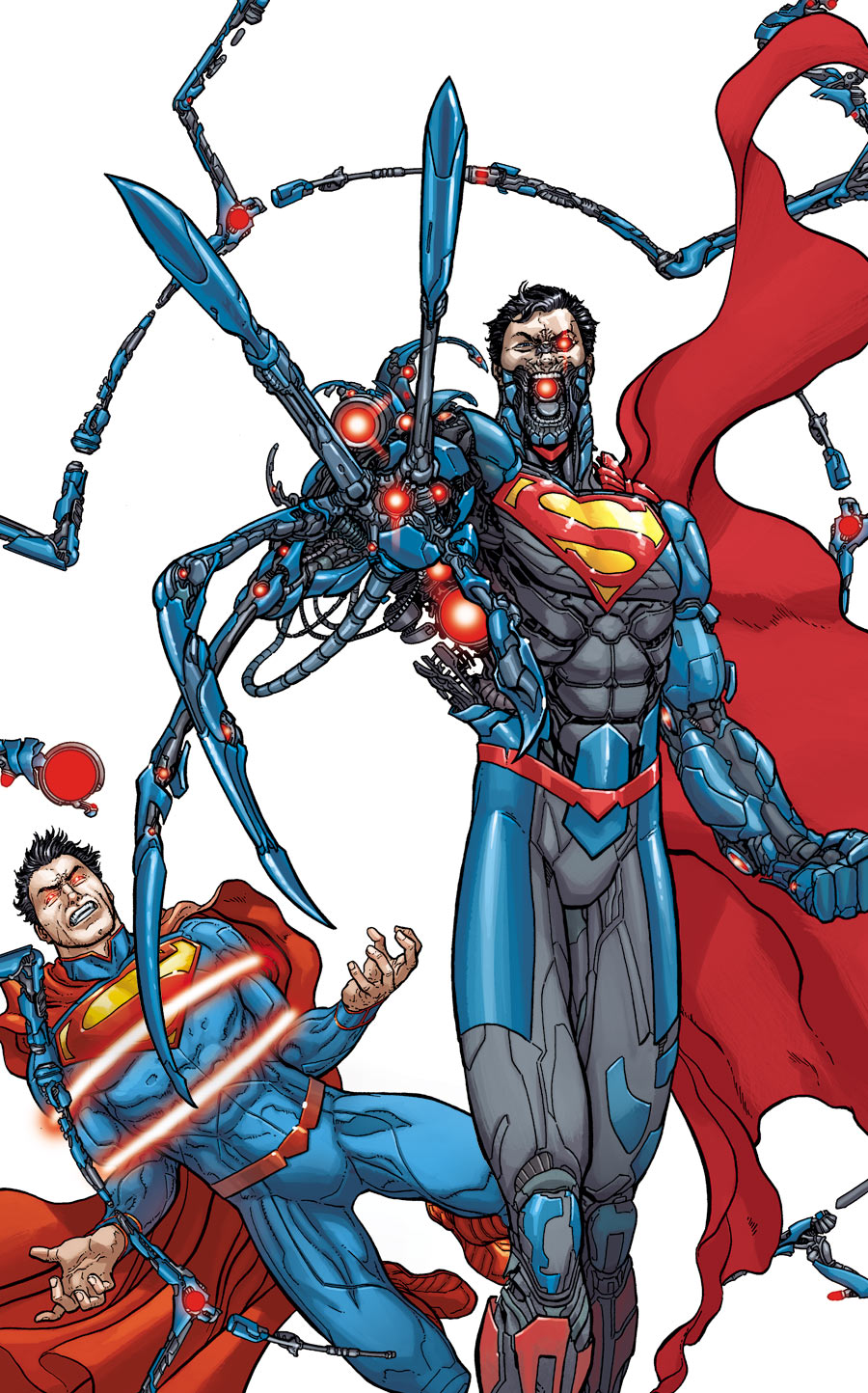
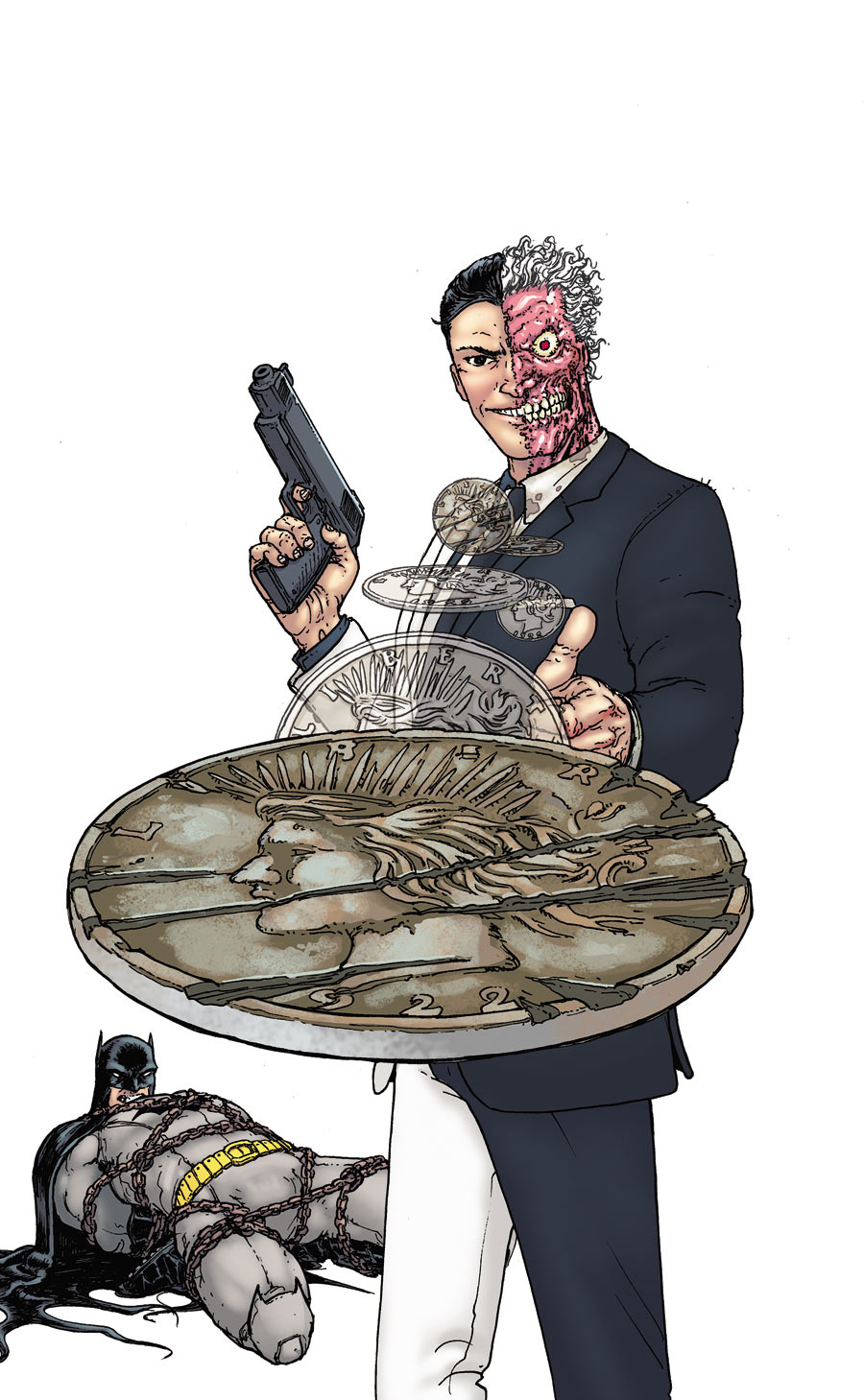
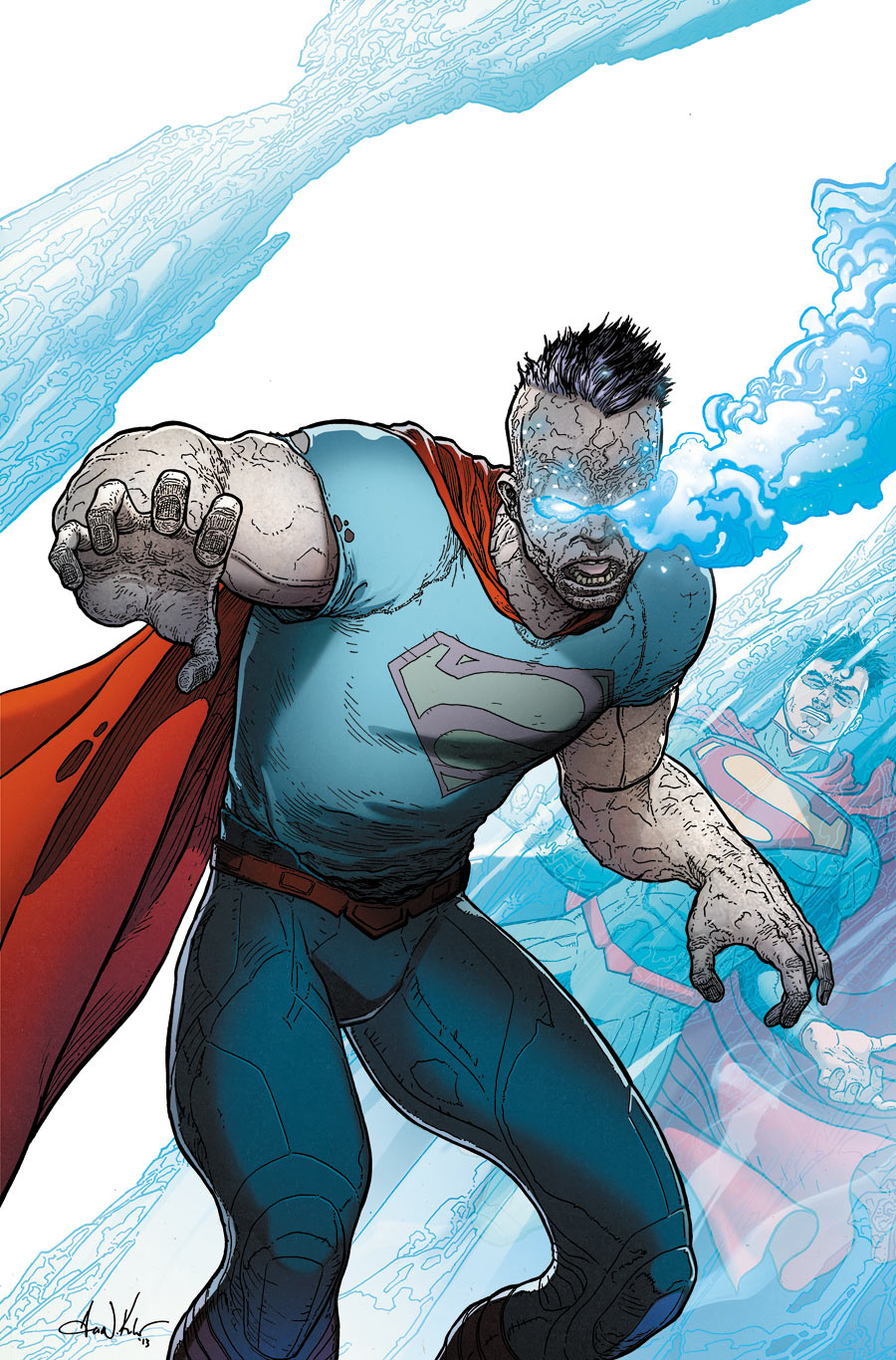


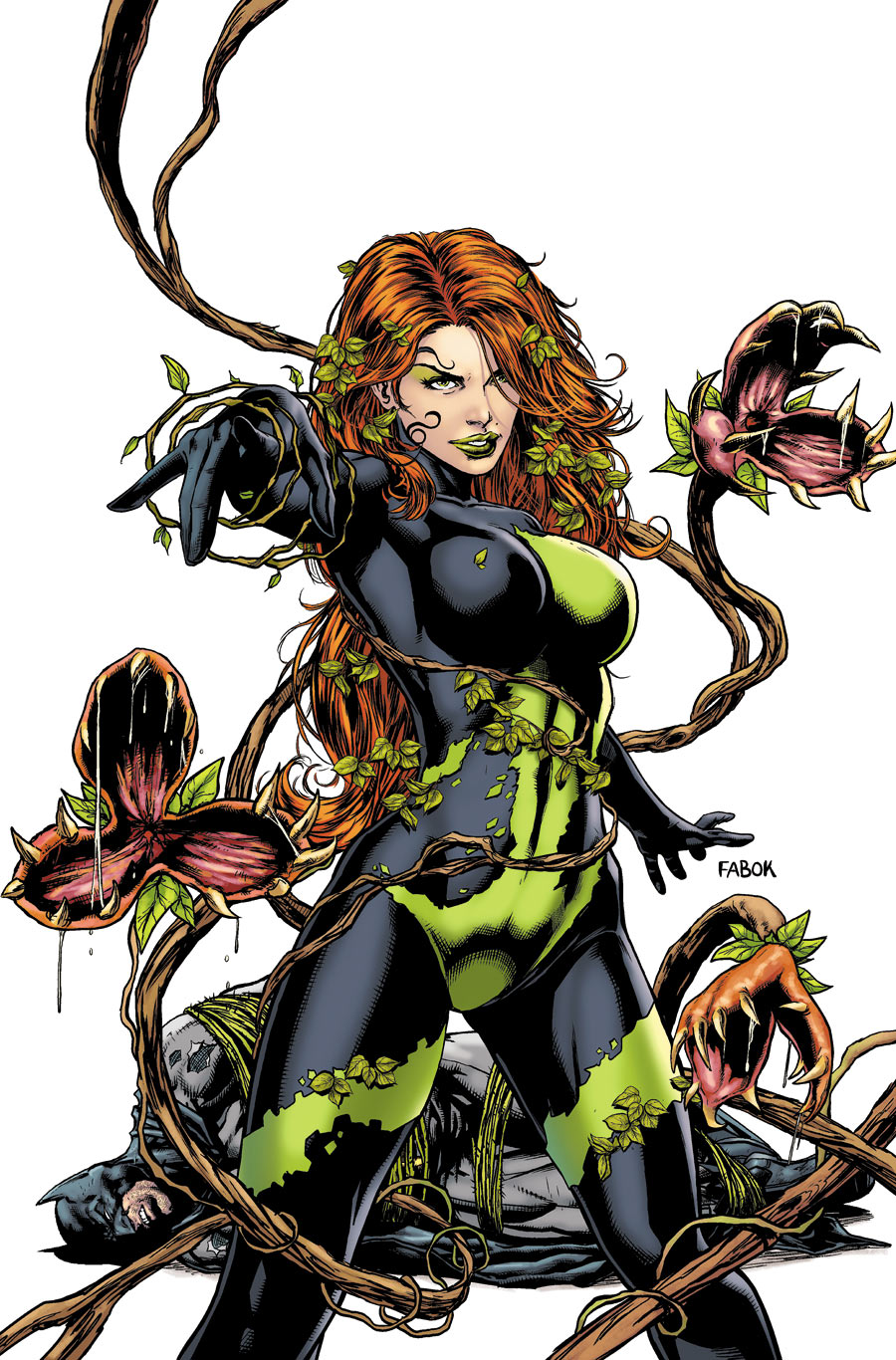

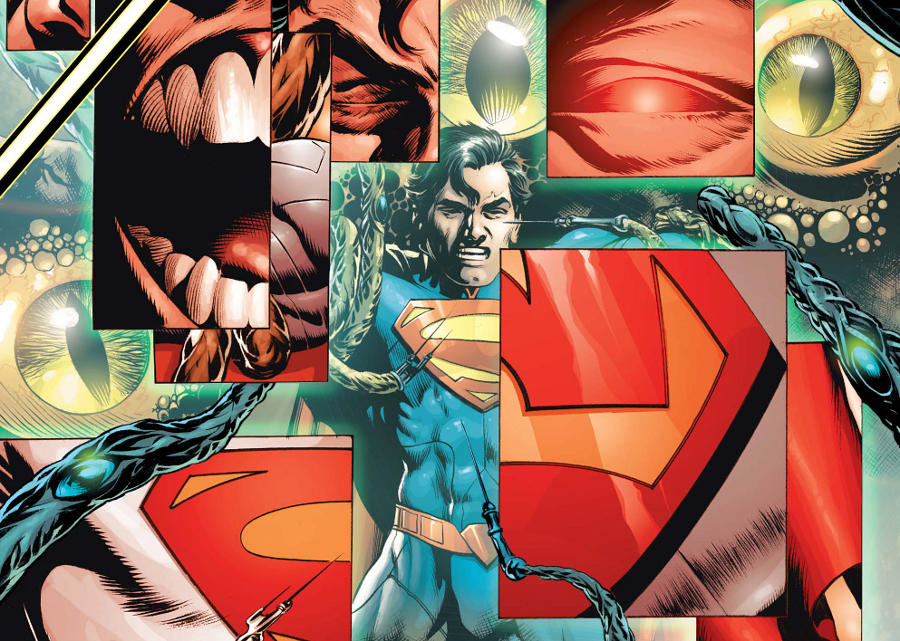


It’s good to see Miller is doing better. It’s so odd to me that no site had mentioned his health issues.